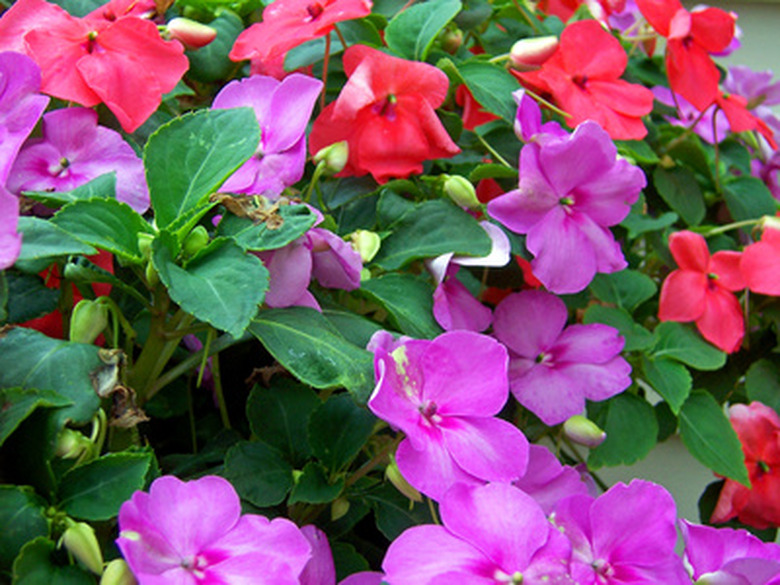How To Transplant Impatiens
Things Needed
- Spade
- Organic compost
- Complete slow-release fertilizer
- Trowel
- Scissors (optional)
- Tray
- Water
- Mulch
Impatiens are the most popular bedding flower in the United States, according to Michigan State University Cooperative Extension, flowering in 15 solid colors as well as other color combinations. They are shade-loving plants which grow 6 to 24 inches tall. If you find that your impatiens are not doing well because of too much sun or soggy soil, you may want to transplant them. Transplanting also becomes necessary if you start the flowers from seed indoors. Transplanting impatiens, however, requires special care as they are delicate flowers.
Step 1
Choose a suitable site on which to transplant the impatiens. Look for a place with partial or filtered sunlight and well-drained, rich soil. Impatiens do well on slightly acidic to slightly basic soil. Make sure the flowers never receive consistent direct sunlight or they will have fewer flowers, small leaves and stunted growth.
- Impatiens are the most popular bedding flower in the United States, according to Michigan State University Cooperative Extension, flowering in 15 solid colors as well as other color combinations.
- If you find that your impatiens are not doing well because of too much sun or soggy soil, you may want to transplant them.
Step 2
Prepare the new site, estimating how much space the flowers will occupy. Dig the soil to a depth of 6 to 8 inches with a spade, breaking up large clumps of soil and removing rocks. Mix organic compost and peat moss into the soil to increase the amount of nutrients available for the flowers. Also, mix in a complete slow-release fertilizer at this time.
Step 3
Dig the impatiens out of the soil with a trowel if you are transplanting established plants. Make sure to get the entire root ball. Inspect the roots, making sure they are white and supple. If they are damaged or browning, clip the ends off with scissors.
- Prepare the new site, estimating how much space the flowers will occupy.
- Dig the impatiens out of the soil with a trowel if you are transplanting established plants.
Step 4
Place the flowers on a tray for transporting. Moisten the soil around the roots to decrease the trauma of transplanting.
Step 5
Dig a hole for each flower at the new site at a depth the same size as the height of the root ball and twice the width. This will give the roots room to expand. Space the holes about 12 inches apart. Place the flowers in the holes, making sure the top of the root balls are even with soil level. Backfill the soil around the roots and tamp down around each plant to establish it firmly in the ground.
- Place the flowers on a tray for transporting.
- Place the flowers in the holes, making sure the top of the root balls are even with soil level.
Step 6
Place a 2 to 4-inch layer of mulch around the impatiens. This will increase moisture for the plants and keep down weed competition. Water the flowers deeply and keep watering throughout the growing season, allowing them to dry slightly between waterings.
Tip
Do not handle the impatiens by the stems, as they are very brittle. If a stem breaks, the flower will die. Instead, handle the flower carefully by the leaves or root ball. Leaves can grow back, even if damaged.
